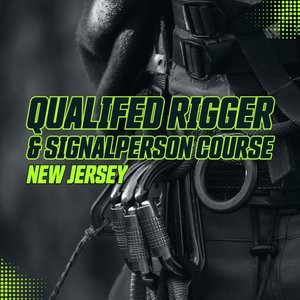Signal Rigger Qualification
This one day program is for Crane Signal/Rigger Qualification, which, as of December 17, 2022, may be required as per AMSE B30.5 standards. This update is requiring that at least one of your riggers must be qualified, depending on the type of job site you are on. The class will go over the various excemptions to this rule as well.
Students will increase their knowledge and skills in rigging operations. This class provides an excellent opportunity for students to learn more about how to properly inspect and apply rigging.
Whenever working within fall zone and hooking, unhooking and guiding a load or doing the initial connection of a load to a component or structure Qualified Riggers are required, as per OSHA (1926.1425(c))
According to OSHA, a qualified rigger is defined as: Person holds a degree, certificate or professional standing OR. Person has extensive knowledge, training and experience AND Person can successfully demonstrate their ability.
When is a qualified rigger required?
Employers must use qualified riggers during hoisting activities for assembly and disassembly work (1926.1404(r)(1)). Additionally, qualified riggers are required whenever workers are within the fall zone and hooking, unhooking, or guiding a load, or doing the initial connection of a load to a component or structure (1926.1425(c)).
We host public, open enrollment, Signal/Rigger Qualification courses quarterly, but can also come to you and host a private class! Contact us today to learn more!
During crane operations, the safety of employees can depend on signals given to the operator by the signal person. Because of this, it is essential that the signal person be capable of giving clear, accurate, appropriate signals that communicate the needed information. It is equally critical that the operator understands the signals given.
There are many kinds of equipment involved with rigging, such as slings, shackles, hitches, and more. Equipment can have their own unique types as well. Each type has its advantages and disadvantages, and workers need to be aware of them. Workers also need to know how to inspect their equipment to make sure it is safe to use. Damaged and worn out hardware greatly increases the risk of an accident. There are also certain principles to consider when rigging . This includes weight, angles and stresses, and center of gravity. Take all these elements into account when making a pick.
This program will provide all attendees a certifice of completion for the qualification, that should be renewed an annual basis.


